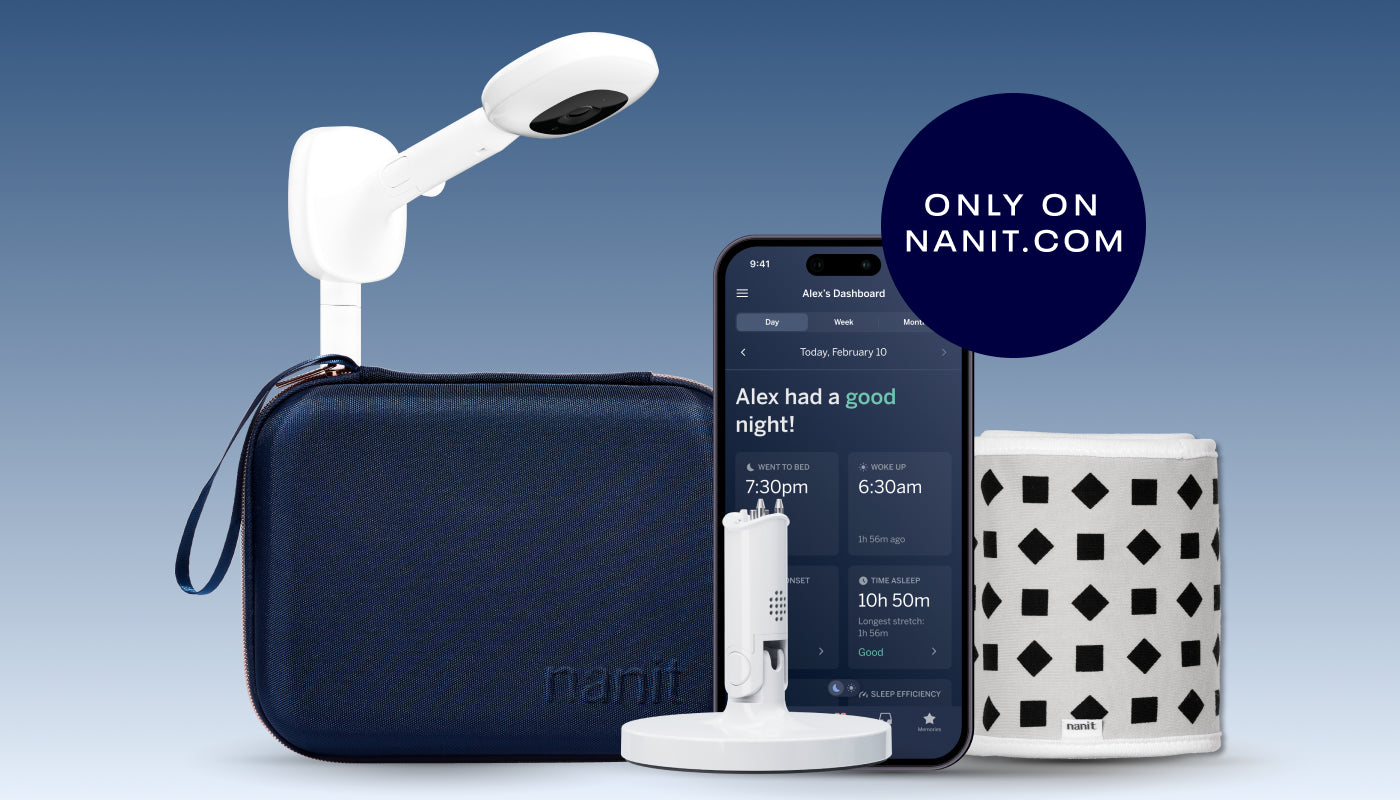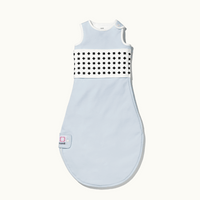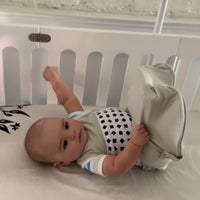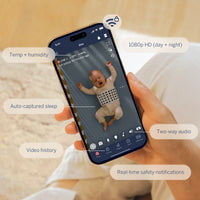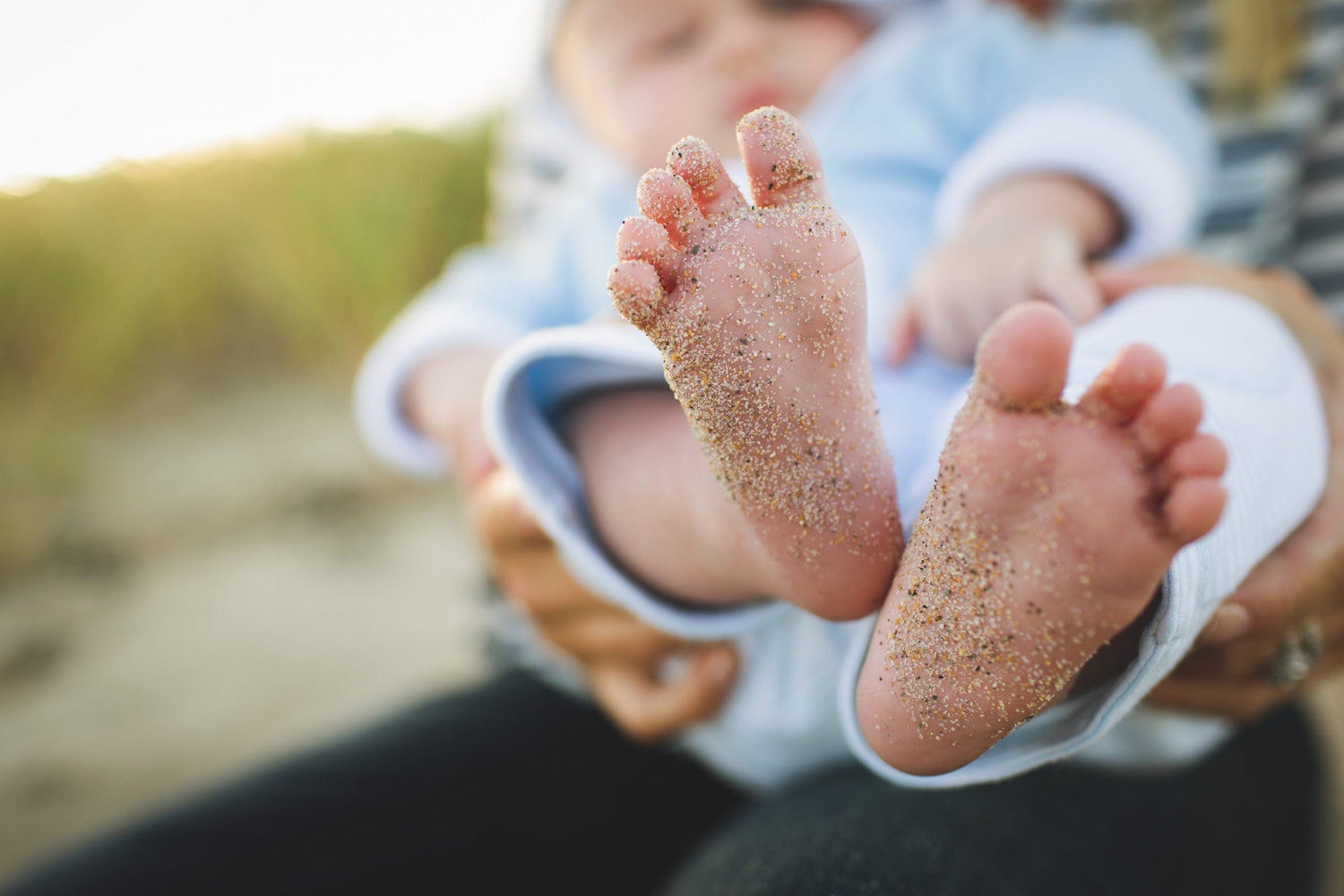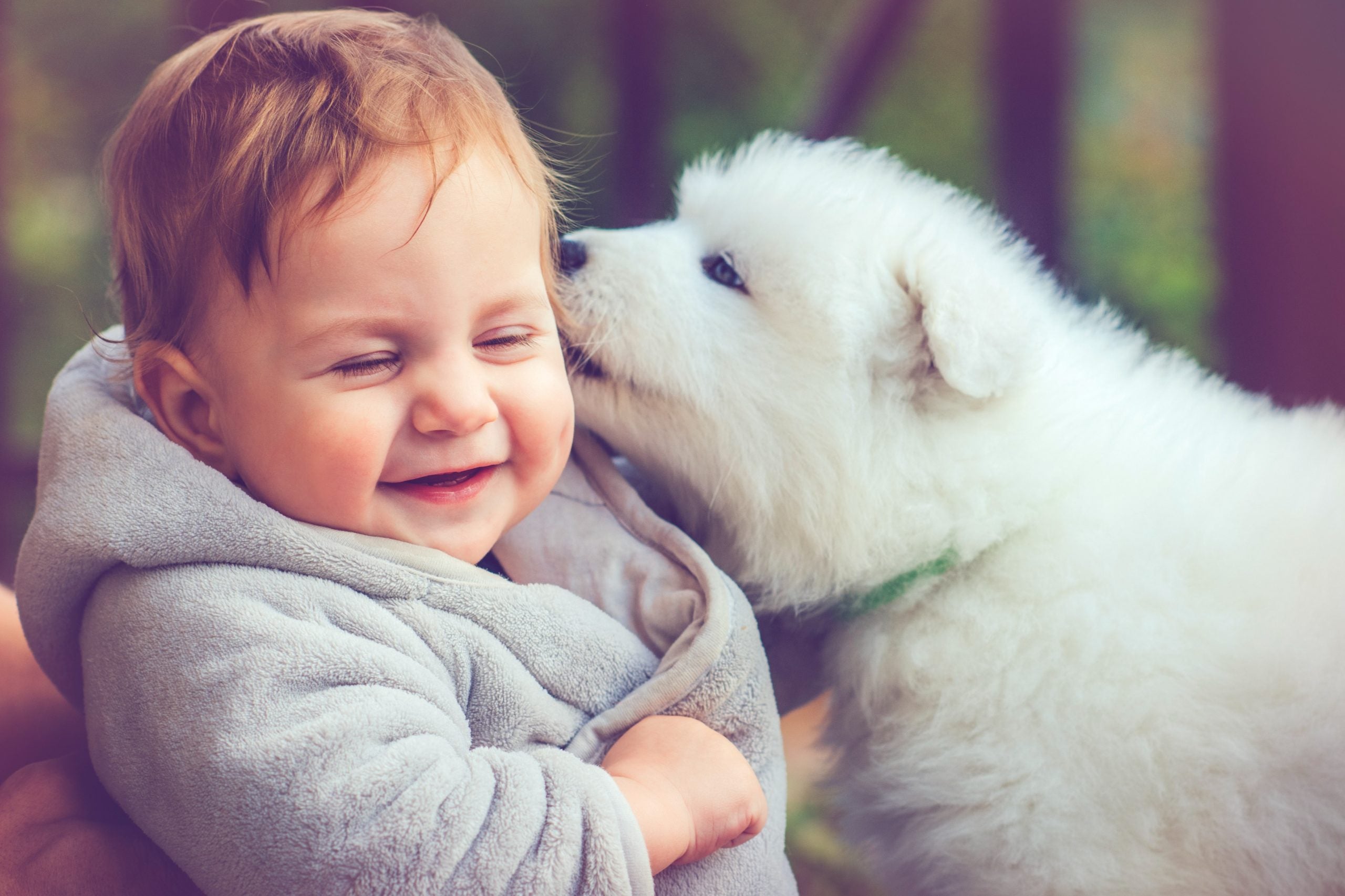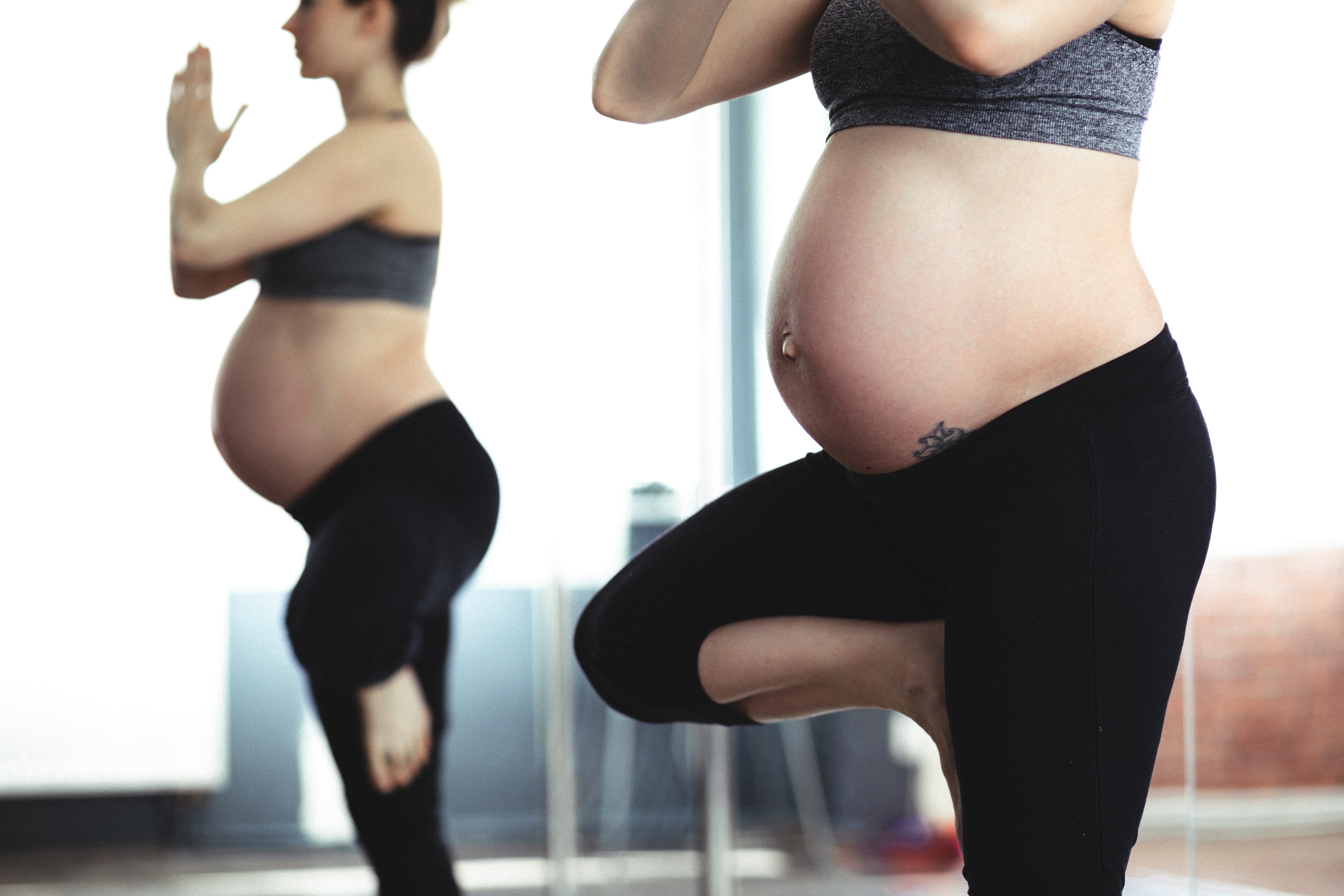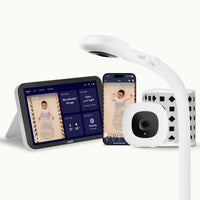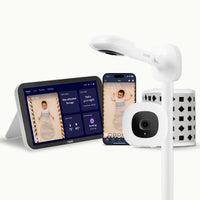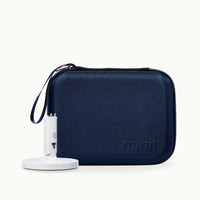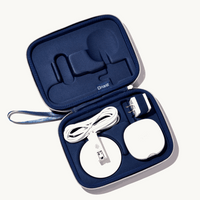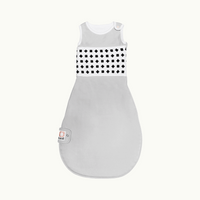Spending time outside is a great way to introduce your baby to stimulating visuals, smells, and the elements of nature. And whether it’s a walk around the block or a family trip to the beach, summer is the perfect time to get out and greet the world.
But the high temps during the full swing of summer pose a challenge: How to keep your baby safe from the sun? Here’s everything you need to know to keep your little one hydrated, happy, and healthy during the hot summer weather:
Sun safety 101 for baby:
Protecting your baby from the sun is crucial, as her still-developing skin is thin and extra sensitive to the sun’s UV rays.
According to the American Academy of Dermatology, children under six months should be kept out of the sun as much as possible. That’s because newborns haven’t fully developed melanin – the brown pigment that acts as a natural sunblock – and consequently, are highly susceptible to burns. The best way to keep your newborn safe from sun damage is to keep her in the shade when she’s younger than six months. Seek out spots underneath the trees at parks, prop up a wide umbrella at the beach, or make good use of the sunshade hood in your stroller. And just like for adults, sun exposure should be limited between peak hours, which range between 10am and 4pm.
Your baby’s clothing is an important factor in his sun protection as well. The longer, the better – loose-fitting and lightweight garb will keep baby more comfortable than would shorts and short-sleeved shirts, which expose him to the sun. Oversized cotton tees and loose pants are perfect. If your child is wearing a white outfit that gets wet, make sure to get her into shade ASAP – wet, white material provides minimal protection from UVB rays.
And if she’ll keep them on, sunglasses can be a great sun shield for babies. Tiny aviators are more than just adorable accessories – they also protect the eyes, eyelids, and surrounding skin. Starting the habit while your baby is young will help her get used to wearing them. And don’t forget a wide-brimmed hat, too!
Best sunscreen for baby:
The best sunscreens for baby’s skin are mineral-based, which utilize zinc oxide and/or titanium dioxide. Since mineral sunscreens stick to the skin and act as a physical barrier against the sun (rather than use chemicals which seep into pores), they tend to cause less irritation for baby’s sensitive, absorbent skin. (They’re also great for adults with sensitive skin.)
Dr. Hai Cao, MD at South Slope Pediatrics in Brooklyn, New York, recommends looking for the words “broad-spectrum coverage” – in other words, a sunscreen that will cover for both UVA and UVB rays. He also recommends avoiding products that contain oxybenzone, a chemical that can have hormonal effects on a child’s developing body.
Once your little one is past her six-month-mark, it’s safe to apply sunscreen more frequently. Coola and Bare Republic both make sunscreen sticks that are safe for babies with sensitive skin. Depending on how quickly you and your child tend to burn, go for a higher SPF – but there’s no need to exceed SPF 50, which the FDA has ruled as the maximum level of efficacy.
Applying sunscreen 30 minutes before going outside is crucial, as the formula needs time to get activated, says Dr. Cao. Reapply every two hours or so while in the sun.
Best way to apply sunscreen on baby:
Apply a nickel-sized amount to your baby’s head, making sure to cover the scalp if your baby doesn’t yet have hair. If you’re using a sunscreen stick, make sure to apply an adequate amount, and rub it in fully afterwards.
Get every part of baby’s body that might be exposed – including hands, back of neck, feet, and behind his ears.
Don’t forget to apply sunscreen even on overcast days – up to 80% of the sun’s harmful UV rays can penetrate your skin through clouds.
Sun safety for babies in the car:
The sun’s UVA rays – while not as damaging as the sunburn-causing UVB rays – are powerful enough to penetrate through a car’s side and rear windows.
Keep your baby in sun-protective clothing when you’re driving, or consider purchasing a UV shield, which blocks out harmful rays but not sunlight.
Prevent overheating for baby:
To prevent heat stroke in your baby, check his back, chest, and neck to make sure he’s at a comfortable temperature throughout the day. Temperatures are more difficult to monitor during the evenings, but most medical experts recommend a sleep environment of 65 to 70°F. (Psst: With Nanit, you can check the temperature and humidity of your baby’s nursery at the top of your live feed on the “Live” tab, and near the top of the screen while viewing the live feed in full-screen.)
Signs of overheating in a baby include fever-grade temperatures (103°F) but no sweating; hot, red skin; a rapid pulse and dizziness, confusion, and restlessness; and vomiting. If you think your baby might be overheated, bring her to a cool environment immediately and follow these steps from Baby Center.
Prevent dehydration for baby:
Your little one can’t hold a ton of liquids yet, so steady hydration is key during hot weather.
According to What to Expect, babies who aren’t yet eating solid foods will get all their necessary nutrients and liquids from breast milk or formula, meaning there’s no need to compensate with additional water or juice. Just make sure to bring extra bottles or a sturdy nursing cover when you’re out and about.
Once your baby is eating solids, supplement with sips of water, plus water-heavy fruits like apples, pears, and berries.
—
With a bit of prep, enough shade, and plenty of fluids, you and your little ray of sunshine can enjoy all the fun this hot season has to offer. See you at the beach!


